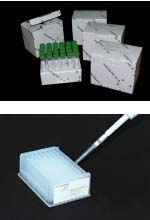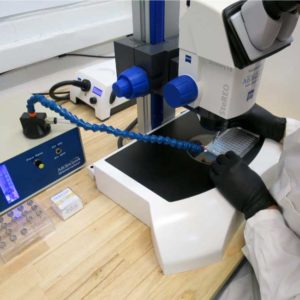JBS Pi-PEG
The Pi-Screens were developed at the MRC Laboratory of Molecular Biology (Cambridge, UK) for efficient crystallization screening of soluble proteins (Pi-minimal Screen) and integral membrane proteins (Pi-PEG Screen). The approach is based on incomplete factorial design.
Product Information
The Pi-Screens were developed at the MRC Laboratory of Molecular Biology (Cambridge, UK) for efficient crystallization screening of soluble proteins (Pi-minimal Screen) and integral membrane proteins (Pi-PEG Screen). The approach is based on incomplete factorial design.
The unique formulation was generated following a strategy named Pi sampling [1] in order to create novel combinations of precipitants, buffers and additives across a standard 96-condition plate layout. Thus, the diversity amongst the crystallization conditions is ideal for initial screening.
The Pi-minimal Screen includes 36 components, i.e. 12 precipitants, 12 buffers systems and 12 salts. Buffers employed in the Pi-minimal screen are buffer systems (acid-base pairs, e.g. HEPES and HEPES sodium salt). Consequently, pH can be adjusted by mixing 2 stock solutions at different ratios during later optimizations.
The efficiency of the Pi-minimal Screen was demonstrated by the crystallization of 10 proteins before its commercialization [1].
The Pi-PEG Screen includes various polyethylene glycol mixtures, additives and buffers covering a pH range from 4,0 – 9,5 and hence is suitable for integral membrane proteins as well as for soluble proteins.
The efficiency of the Pi-PEG screen was demonstrated by the crystallization of a G-protein coupled receptor (GPCR) when quality crystals could not be produced with other commercially available screens [1].
Format
Bulk – 4 x 24 screening solutions in 10 ml aliquots
HTS – 96 screening solutions delivered in a deep-well block, 1.7 ml per well
Reference
[1] Gorrec et al. (2011) Pi sampling: a methodical and flexible approach to initial macromolecular crystallization screening. Acta Cryst. D67:463.
Available online at http://journals.iucr.org/d/issues/2011/05/00/bw5391/index.html
PDF Download PDF (356 kB)
Selected Recent Literature Citations of Pi-Screens
- Gorrec (2016) Protein crystallization screens developed at the MRC Laboratory of Molecular Biology. Drug Discov. Today 21:819.
- Ohashi et al. (2016) Characterization of Atg38 and NRBF2, a fifth subunit of the autophagic Vps34/PIK3C3 complex. Autophagy12:2129.
- Omari et al. (2014) Pushing the limits of sulfur SAD phasing: de novo structure solution of the N-terminal domain of the ectodomain of HCV E1. Acta Cryst. D 70:2197
You may also like…
-
Watershed – Optimized Crystal Harvesting
Prevent loss or damage to the crystals that you’ve spent time growing and optimizing. The Watershed™...


